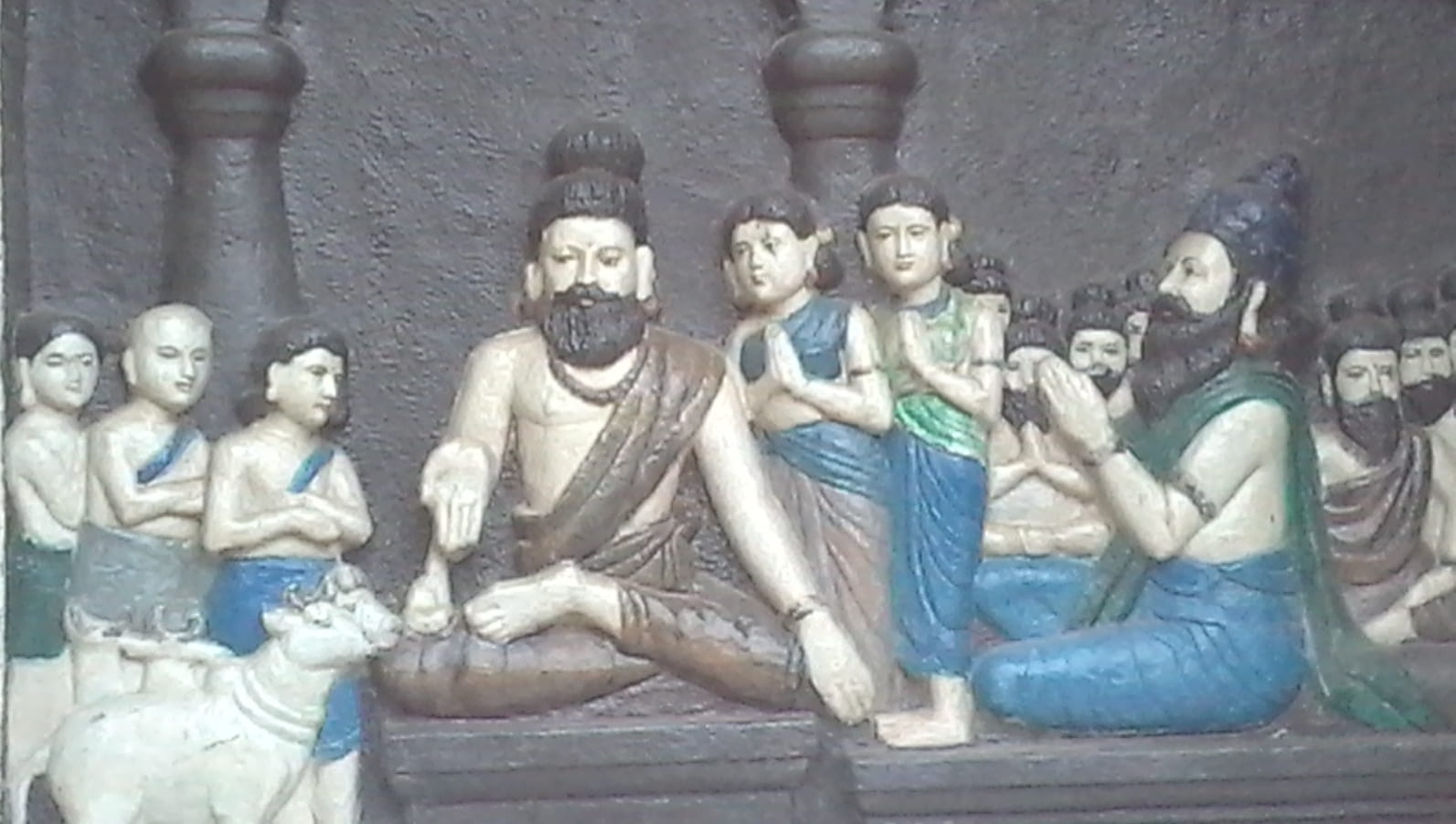Dr. Steven Lindquist (B.A., University of Wisconsin – Madison, 1994; M.A., University of Chicago, 1998; Ph.D., The University of Texas at Austin, 2005) joined the department at SMU as Assistant Professor in 2006 and was promoted to Associate Professor in 2012. He received the Altshuler Distinguished Teaching Award and was inducted into the Academy of Distinguished Teachers in 2021. Some of the classes that he teaches include Introduction to Asian Religions, Hinduism, and advanced courses in Hindu traditions from ancient to modern. His research focuses on Sanskrit religious literature and he has published articles on topics such as late Vedic narrative, riddle-poems, genealogies, and numismatics. He has recently edited a Festschrift in honor of Dr. Patrick Olivelle (New York: Anthem Press) and his monograph on Yājñavalkya now available from SUNY (2023).
Dr. Lindquist has lived in India over six years in Varanasi, Pune, Chennai, and Pondicherry conducting research, reading Sanskrit and Hindi, and consulting with local scholars. The research institutes he has been affiliated with include: Bhandarkar Oriental Research Institute, Adyar Library, Kuppuswami Research Institute, Institut Français de Pondichéry and the École Française d’Extrême-Orient.
His monograph traces the literary life of Yājñavalkya—an ancient Indian sage who is said to be the founder of the White Yajurvedic ritual school. Lindquist follows this figure through over 1000 years of literature (from the Śatapatha Brāhmaṇa and Bṛhadāraṇyaka Upaniṣad through the Mahābhārata and Purāṇas). He elucidates the ways in which communities portrayed and valued Yājñavalkya  over time, in different genres of literature and for different reasons. Rather than seeing “myth” as an end-product, Lindquist traces the mythic process as dynamic and contested, particularly appropriate in the case of Yājñavalkya who is a means to establish a “new” Veda amongst the prevailing orthodoxy. Lindquist analyzes character development, narrative structure, and literary tropes used to serve different religious, political, and literary ends. In this way, this study offers a new means to analyze “myth” and “history” in early Indian literature, paying close attention to the interpretive limits of each within the confines of available evidence. This is the first monograph that looks at a late Vedic figure in both a synchronic and diachronic fashion and uniquely contributes to our understanding of early Indian narrative and myth formation.
over time, in different genres of literature and for different reasons. Rather than seeing “myth” as an end-product, Lindquist traces the mythic process as dynamic and contested, particularly appropriate in the case of Yājñavalkya who is a means to establish a “new” Veda amongst the prevailing orthodoxy. Lindquist analyzes character development, narrative structure, and literary tropes used to serve different religious, political, and literary ends. In this way, this study offers a new means to analyze “myth” and “history” in early Indian literature, paying close attention to the interpretive limits of each within the confines of available evidence. This is the first monograph that looks at a late Vedic figure in both a synchronic and diachronic fashion and uniquely contributes to our understanding of early Indian narrative and myth formation.
Lindquist’s current projects include a reevaluation of the genre of the Upaniṣads, especially the roles and interpretation of the narrative  portions and their centrality to the development and spread of the genre (tentatively titled “Narratives and Knowledge: Reading Upaniṣadic Stories”) and well as a documentary on the origins and persistence of asceticism in South Asia.
portions and their centrality to the development and spread of the genre (tentatively titled “Narratives and Knowledge: Reading Upaniṣadic Stories”) and well as a documentary on the origins and persistence of asceticism in South Asia.
More broadly, Lindquist is concerned with the history, development,  and spread of Indian religious ideas; the modes of composition and transmission of Sanskrit religious texts; the relationship of text, geography and history; asceticism; narrative and narrative theory; and myth and folklore. He also has a fascination with Indian stamps, particularly those with religious and historical themes.
and spread of Indian religious ideas; the modes of composition and transmission of Sanskrit religious texts; the relationship of text, geography and history; asceticism; narrative and narrative theory; and myth and folklore. He also has a fascination with Indian stamps, particularly those with religious and historical themes.




